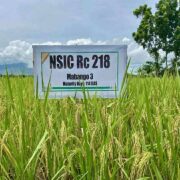Thailand’s marijuana recriminalization: What the Philippines can learn

In September last year, I took a personal trip to Thailand to observe firsthand what was then a groundbreaking shift in Southeast Asia: the legalization of cannabis.
I have a particular interest in marijuana because I wanted to become a cannabis pharmacist once it’s legalized and for its potential to bring a billion-dollar industry to the Philippines, particularly in the agricultural and health sectors.
Thailand legalized medical cannabis in 2018 and its recreational use in 2022, the first country to do so in Southeast Asia.
But only three years after decriminalizing its recreational use, the Thai government has proposed a bill to limit its use strictly to medical purposes. This pivot serves as a cautionary tale about prioritizing market access over regulatory structure.
When I visited Bangkok, the cannabis boom was impossible to ignore. Marijuana stores were scattered everywhere, from main streets to alleyways. As I observed around, I noticed that marijuana products may have passed government regulations but it seemed like the handling of some of the products in the retail stores might not have be safe and could be contaminated.
It made me wonder whether quality control was truly keeping up with the speed of commercialization. Nonetheless, their products indicated the ratio between sativa and indica and the percentage of THC present, which is the mind-altering substance in marijuana. For example, the strong one “Mellowz” is a hybrid of 40 percent sativa and 60 percent indica. The THC present is 29 percent, the total effect of which makes you focused, energetic, and creative.
I also made inquiries about how they get their supplies and if there are prescription requirements for CBD oil. It was good to learn that the label of their CBD oil products showed that it should not be used by pregnant or breastfeeding women and that the prescription requirement depends on the gravity of the medical condition. I also learned that there are marijuana farms around Bangkok located in buildings designed to control the temperature and lighting.
However, the availability of cannabis in Thailand was too lenient. At that time, I already knew the industry would blow up soon. Marijuana products were very accessible. I even saw a street band in Khaosan Road freely selling it early in the morning while I was looking for a place to have breakfast. It was as easy as buying street foods or a pack of cigarettes. I also learned that Thais can grow marijuana at home and consider it a “household crop.”
Ever since, Thais have been using marijuana in their culinary dishes. Marijuana is like the equivalent of umami in their cuisine. They had only banned it before due to international pressure. But when the country legalized it, marijuana found its way back into their traditional cuisine. Many cafes and restaurants offer marijuana-laced foods around Bangkok. One particular cafe is MD-82 Cafe, which is also a repurposed plane. When I visited a Thai Filipino restaurant, they even offered cannabis tea, cannabis balm, and an inhaler.
Thailand remains an inspiring country. Despite this policy reversal, I continue to admire how Thais have preserved their culture while daring to innovate. Unlike the Philippines, Thailand was never colonized, giving it a head start in building national identity, heritage, and modern vision. Their well-built temples, their amazing cuisine, and even their leadership reflect that blend of history and progress.
But their cannabis journey reminds us that boldness without structure can backfire.
As the Philippines and other Southeast Asian countries debate a cannabis policy, Thailand offers both inspiration and a warning. Legalization must be built on science, public education, responsible retail, and strong regulation. Otherwise, what starts as liberation can end in retreat.
TERESA MAY BANDIOLA,
bandiolateresamayb@gmail.com

















Is the specter of 9/11 rising again?